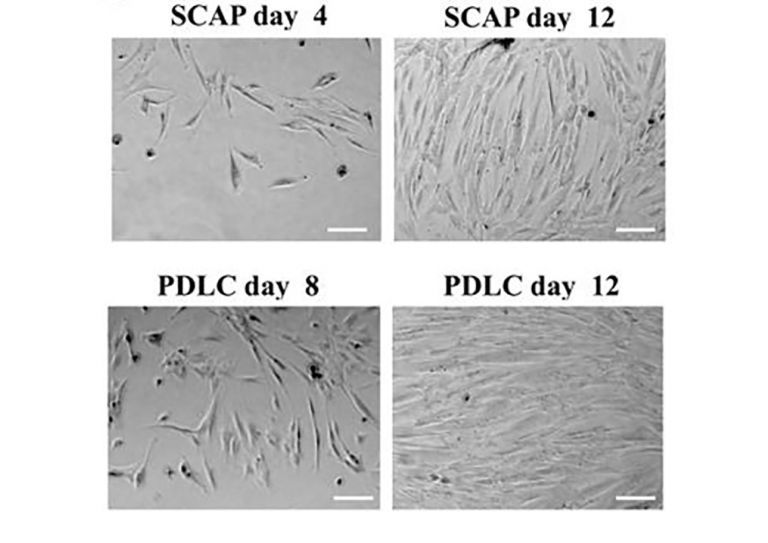Breadcrumb
Lipoxin A4 Attenuates the Inflammatory Response in Stem Cells of the Apical Papilla via ALX/ FPR2
What is it?
Stem Cells from the Apical Papilla (SCAP) are progenitor dental cells that can constantly renew themselves and have the potential to become connective tissue or blood cells. Inflammation plays a complex role in tissue regeneration but appears to suppress stem cell activity. The body's response to inflammation includes releasing substances to resolve it, such as Lipoxin A4 (LXA4), which is secreted by immune cells.
What problem does it aim to solve?
The researchers wanted to learn whether LXA4 has a positive effect on SCAP's ability to stimulate the proliferation of differentiated cells that could then regenerate tissues.
How does it work?
Apical papilla tissue was collected from wisdom teeth (technically known as third molars) that had been extracted from healthy patients between the ages of 16 and 25. SCAP were extracted from the tissue and then subjected to a number of laboratory experiments, which included exposing them to LXA4 under various conditions.
What are the real-world implications?
The authors observed that SCAP suppressed proliferation of activated blood mononuclear cells, and the inhibitory effect was increased by LXA4 pretreatment. Moreover, they show that SCAP possess the needed receptor, which explains the observed mechanism. Taken together, the data demonstrate that LXA4, a potent endogenous signal involved in the resolution phase of inflammation, can modulate the behavior of stem cells in inflammatory conditions in vitro. The findings may help to elucidate mechanisms by which stem cells can influence the outcome of inflammatory processes and disorders, which could become targets for the development of new endodontic treatments.
What are the next steps?
Additional research on LXA4 and its receptor ALX/FPR2, and hopefully, eventually human trials of new treatments.

Generation of fibroblast colonies from single cells after 8 to 12 days of culture. Representative phase contrast microscopic photographs of generation and expansion of SCAP and PDLC. Cells have elongated shapes and grow attached to substrata. Scale bar, 25 μm.
Source
“Lipoxin A4 Attenuates the Inflammatory Response in Stem Cells of the Apical Papilla via ALX/FPR2”, Scientific Reports, volume 8, Article number: 8921 (2018)
Authors
A. Gaudin, Department of Endodontics, University of Nantes, Nantes, France; Centre de Recherche en Transplantation et Immunologie UMR1064, INSERM, Université de Nantes, Nantes, France.
M. Tolar, Department of Orthodontics, University of the Pacific School of Dentistry, CA, San Francisco, USA.
O. A. Peters, Department of Endodontics, University of the Pacific School of Dentistry, CA, San Francisco, USA; University of Queensland, School of Dentistry, Oral Health Centre, Herston, QLD, Australia






